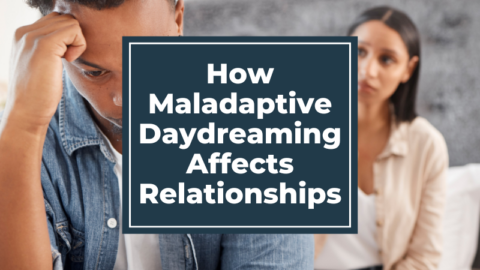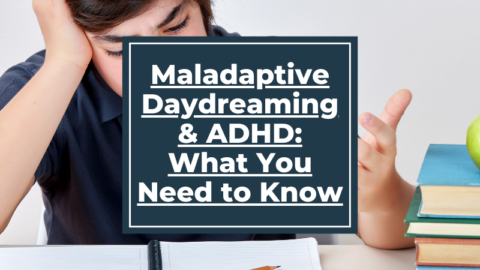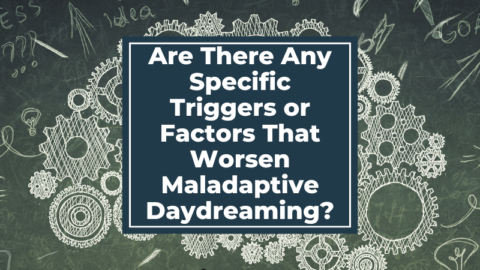Mindfulness and meditation practices have shown promise in helping individuals manage maladaptive daydreaming. While research specifically focused on the effectiveness of mindfulness and meditation for maladaptive daydreaming is limited, these practices can be beneficial for cultivating present-moment awareness, reducing excessive daydreaming, and enhancing self-regulation.
Mindfulness involves paying attention to the present moment with non-judgmental awareness. By practicing mindfulness, individuals can develop a greater ability to observe their thoughts, emotions, and sensations without getting caught up in them. This increased awareness can help individuals recognize when they are engaging in maladaptive daydreaming and bring their attention back to the present.
Meditation, which is often a part of mindfulness practices, involves intentionally focusing attention on a specific object or anchor, such as the breath or bodily sensations. Regular meditation practice can enhance self-awareness, improve attentional control, and promote emotional regulation. These benefits can contribute to reducing the frequency and intensity of maladaptive daydreaming episodes.
Incorporating mindfulness and meditation into daily routines can provide individuals with tools to manage their daydreaming tendencies and bring a greater sense of presence to their lives. It’s important to note that consistency and regular practice are key to experiencing the full benefits of these techniques.
While mindfulness and meditation can be helpful for many individuals, it is essential to recognize that each person’s experience with maladaptive daydreaming is unique. It may be beneficial to explore these practices under the guidance of a qualified professional, such as a therapist or meditation teacher, who can provide personalized guidance and support.
Mindfulness Techniques That May Be Helpful In Managing Maladaptive Daydreaming
In addition to mindfulness and meditation practices, other strategies can be helpful in managing maladaptive daydreaming:
- Cognitive Behavioral Therapy (CBT): CBT is a widely used therapeutic approach that focuses on identifying and challenging maladaptive thoughts and behaviors. It can help individuals recognize triggers for excessive daydreaming, develop healthier coping strategies, and reframe negative thought patterns.
- Setting goals and creating structure: Establishing clear goals and creating a structured routine can help individuals stay focused and minimize opportunities for excessive daydreaming. Breaking tasks into manageable chunks and setting specific time limits for daydreaming can also be helpful.
- Engaging in meaningful activities: Finding engaging and fulfilling activities can help redirect attention away from daydreaming. Pursuing hobbies, participating in social activities, or engaging in creative outlets can provide a sense of purpose and fulfillment, reducing the need for excessive daydreaming. Engaging in activities that require focus and concentration, such as puzzles, reading, or learning new skills, can redirect attention away from daydreaming and provide a sense of fulfillment and satisfaction.
- Establishing boundaries with daydreaming: Setting boundaries around daydreaming can be beneficial. This may involve allocating specific times or places for daydreaming, limiting the duration of daydreaming episodes, and actively redirecting attention when daydreaming becomes excessive.
- Seeking support: Connecting with others who have experienced or are experiencing maladaptive daydreaming can provide a sense of validation and support. Online forums, support groups, or therapy sessions specifically focused on maladaptive daydreaming can offer valuable insights, strategies, and a sense of community.
- Mindful daydreaming: Rather than completely suppressing daydreaming tendencies, some individuals find it helpful to practice mindful daydreaming. This involves consciously engaging in daydreaming in a controlled and intentional manner, allowing for creative expression and exploration within defined timeframes.
- Identifying triggers and patterns: Keeping a journal or log of daydreaming episodes can help identify common triggers or patterns. By becoming more aware of the specific situations, emotions, or thoughts that lead to excessive daydreaming, individuals can develop strategies to manage or avoid those triggers.
- Physical grounding techniques: Engaging in physical activities that promote grounding and present-moment awareness can help redirect attention away from daydreaming. Examples include exercise, yoga, deep breathing exercises, or sensory grounding techniques like focusing on tactile sensations or listening to calming music.
- Mindfulness-based stress reduction: Participating in formal mindfulness-based stress reduction programs, which typically involve a structured curriculum and guided mindfulness practices, can help cultivate present-moment awareness and reduce excessive daydreaming tendencies.
- Visualizations and guided imagery: Instead of engaging in uncontrolled daydreaming, practicing intentional visualizations or guided imagery exercises can offer a structured and purposeful way to explore imaginative experiences.
- Self-reflection and self-awareness: Developing self-awareness around the underlying motivations and emotions that drive maladaptive daydreaming can help individuals gain insight into their patterns and triggers. Regular self-reflection through journaling or therapy can be beneficial in this regard.
- Mindful self-compassion: Being kind and compassionate towards oneself, acknowledging the challenges associated with maladaptive daydreaming, and practicing self-acceptance can help reduce feelings of guilt or shame that may be associated with the condition.
- Digital detox: Limiting screen time and reducing exposure to digital media can help break the cycle of excessive daydreaming that may be triggered by online content or social media. Setting boundaries around technology use and incorporating regular screen-free periods can be beneficial.
- Cognitive restructuring: Challenging and reframing negative thought patterns or beliefs associated with maladaptive daydreaming can help shift the mindset and develop a more balanced perspective. Cognitive restructuring techniques, often used in cognitive-behavioral therapy, can assist in identifying and modifying unhelpful thoughts.
- Environmental modifications: Creating a physical environment that supports focus and productivity can be helpful. This may involve organizing your workspace, minimizing distractions, and creating a dedicated area for work or study.
- Mindful transitions: Practice mindfulness during transitions between activities to help maintain focus and prevent drifting into excessive daydreaming. Take a few moments to ground yourself and consciously shift your attention before moving on to the next task.
- Mindful movement: Incorporate physical activities such as yoga, tai chi, or mindful walking into your routine. These practices promote mind-body connection, enhance present-moment awareness, and can help redirect attention away from daydreaming.
You may further benefit from 102 Powerful Ways to Relax and Calm Your Anxious Mind.
It’s important to approach the management of maladaptive daydreaming with patience and self-compassion. Different strategies may work for different individuals, so it can be helpful to explore and experiment with various techniques to find what works best for you. Seeking guidance from a mental health professional experienced in treating maladaptive daydreaming can provide personalized support and guidance in developing an effective management plan.
Have you found that practicing mindfulness has helped you manage your Maladaptive Daydreaming? Let us know in the comments below or by joining the Maladaptive Daydreaming Forum.









